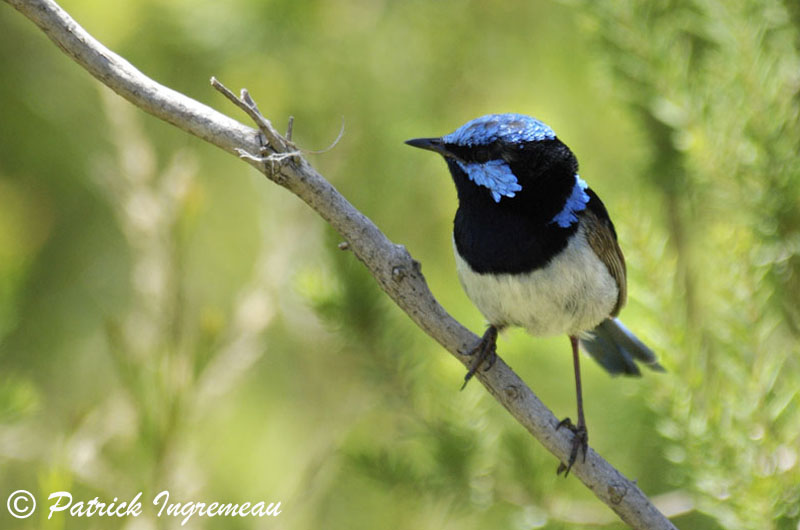
Superb Fairywren
Malurus cyaneus
Passeriformes Order - Maluridae Family
BIOMETRICS :
Length: 14-16 cm ; Weight: 8-13 g
DESCRIPTION:
Superb Fairywren male in breeding plumage has blue and black upperparts. Crown, ear coverts and upper mantel are bright turquoise-blue. These parts of plumage are highly iridescent. Nape, lower back and rump are black. Upper wings are brown. Long tail is blue.
On the underparts, chin, throat and upper breast are deep blue-black. Black breast band separates whitish belly from blue throat.
Thin bill is blackish. Eyes are dark brown, with black eye line starting from lores and joining the black nape. Legs and feet are brownish.
Non breeding male is similar to female, but it has black bill and has no reddish eye-ring.

Superb Fairywren adult female is very different. She has brown head, back, wings and tail. Underparts are paler, with whitish throat and brownish-white belly and vent.
Bill is brown. Eyes are dark brown, with broad pale chestnut eye-ring. Legs and feet are pinkish-brown.
Immature resembles female. Young male reaches its beautiful adult plumage at two to three years of age.
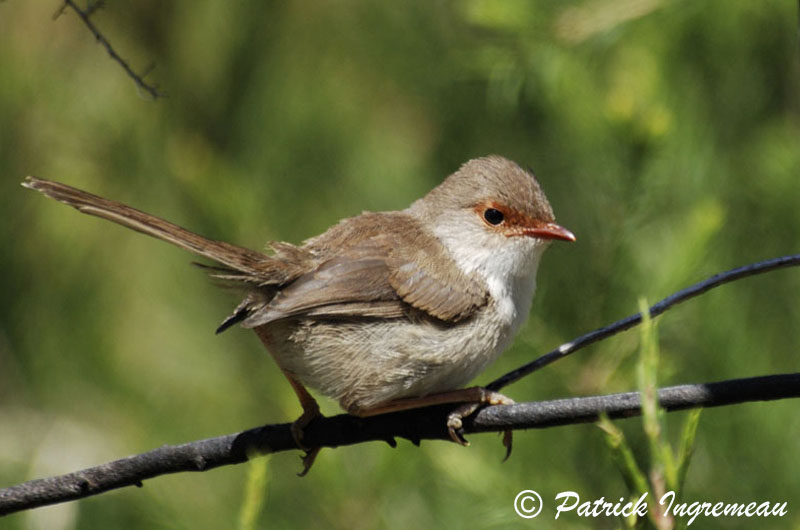
We can find two subspecies:
M.c.cyaneus, living in Tasmania and Bass Strait Islands. It is larger and darker in blue coloration.
M.c.cyanochlamys is found in Australia. It is smaller and paler than previous, with paler blue colours.
VOICE: SOUNDS BY XENO-CANTO
Superb Fairywren male and female utters series of high-pitched trills, large series of short elements. Male may continue these trills into songs, as advertising calls.
Alarm call is a series of sharp “chit” in response to predators.
Female at nest utters a soft “purr”.
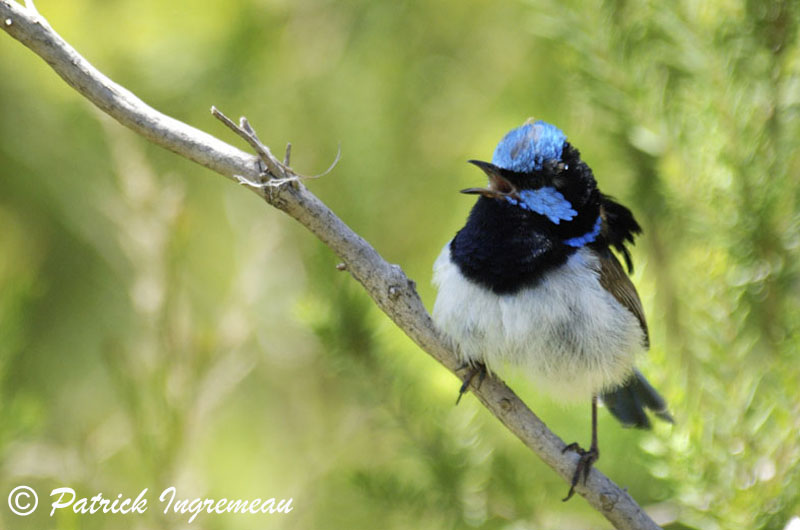
HABITAT:
Superb Fairywren may be found in grasslands with scattered shrubs, wooded areas and forests with dense undergrowth. This bird needs dense cover and low shrubs as sheltered areas. It is common in urban parks and gardens.
RANGE:
uperb Fairywren is found in south-eastern Australia and in Tasmania.
BEHAVIOUR:
Superb Fairywren feeds mainly on the ground and in low bushes. This bird always feeds in open areas close to dense cover where it can shelter if threatened. It moves with series of hops and bounces, with tail held upright. It is very active and restless when feeding.
It is often seen in small social groups, including one male, several females and young. They feed in groups and all members often help dominant pair for rearing chicks and defend territory. There are usually males in eclipse, in relation with the breeding pair. Birds of the same group sleep side-to-side at night in dense cover.
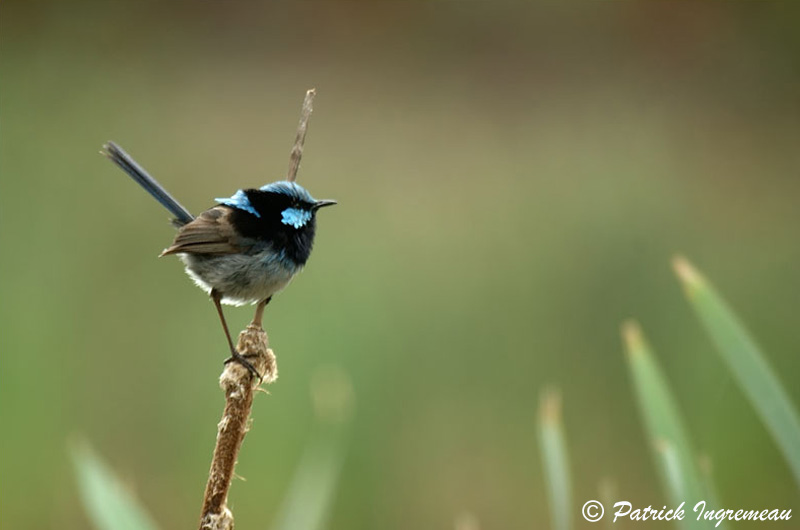
Male performs elaborated displays during breeding season, and particularly directs them to female in fertile period. Male does high survey of female during this period and often offers bright yellow flower petal to her.
Male performs displays similar to movements of Seahorse. It performs an undulating flight with erect head feathers. It flies and tilts its body up and down, and descends slowly with rapid wing beats. Then, it springs upwards after landing.
Male may also “play” with the blue ear tufts, involving the flaring by erecting these feathers.
Superb Fairywrens pairs for life, even they regularly copulate with other mates. Male presents yellow petal to female in order to strengthen pair bonds, but also to gain other female.
Territorial disputes can occur between neighbouring groups at territory boundaries.
FLIGHT:
Superb Fairywren has short and rounded wings, helping the bird in good initial lift, and useful during short flights. Male performs an exaggerated undulating flight during courtship displays.
REPRODUCTION:
Breeding season occurs mainly from September to January, sometimes extending to March.
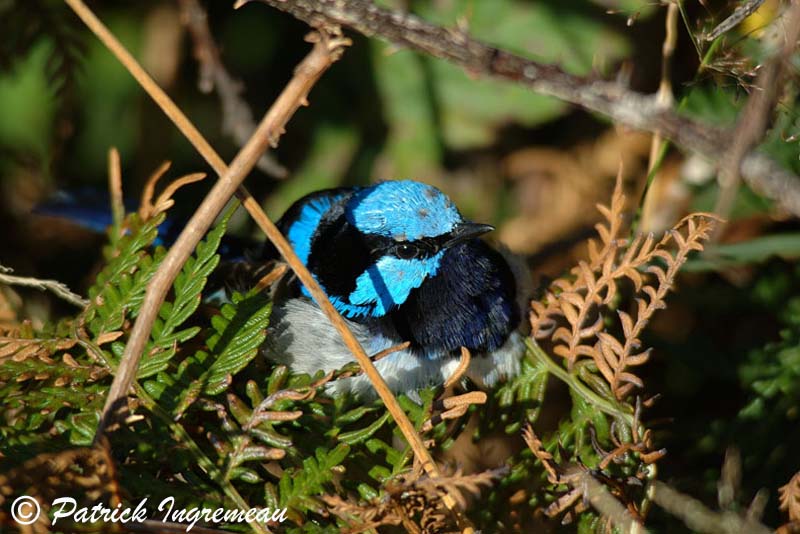
Nest is built in low thick shrub, at about one metre above the ground. It is a dome-shaped round nest with lateral entrance. Nest is made with grasses and spider webs loosely woven.
Female lays 3 to 4 white eggs with reddish-brown markings. Incubation lasts about two weeks.
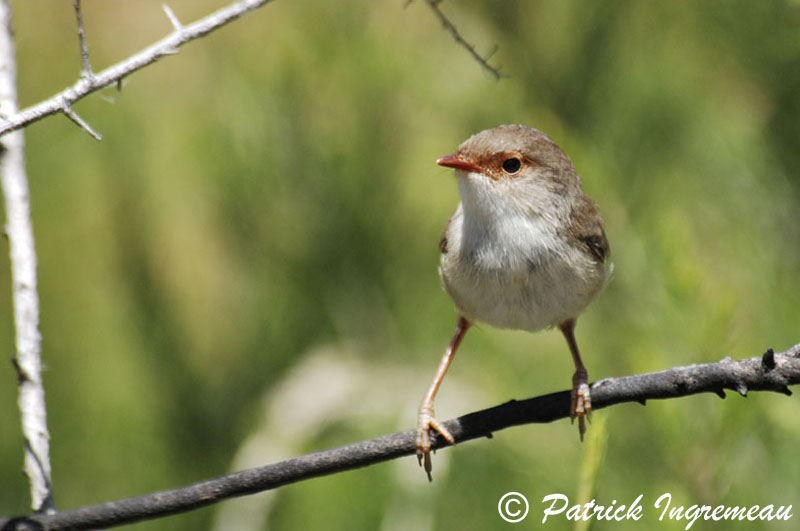
All members of the group feed and rear the young during two weeks more. Young become independent for food 40 days after hatching. They remain in the group as helpers for one or two years, before they can breed for first time in new group.
This species produces at least two broods per year, sometimes more.
Superb Fairywren’s nests are parasitized by several Cuckoo species.
DIET:
Superb Fairywren is mainly insectivorous, feeding on ants, grasshoppers, flies and various larvae. It also consumes some seeds, flowers and fruits.
Chicks are fed with caterpillars and grasshoppers.
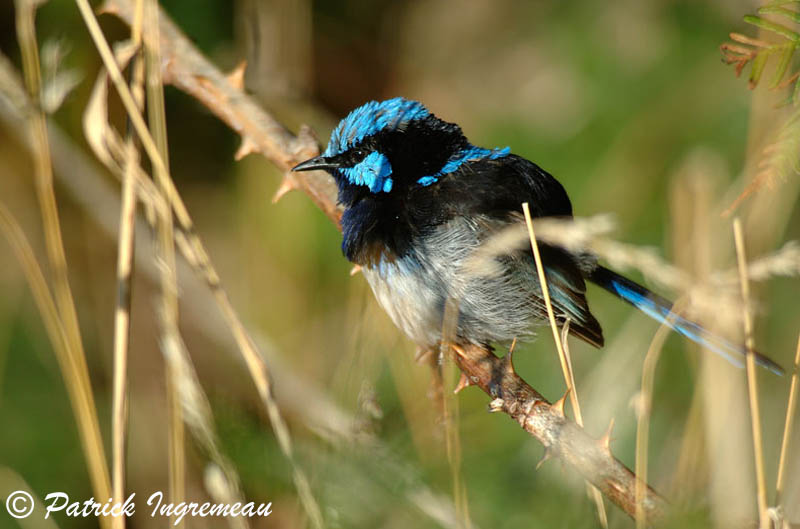
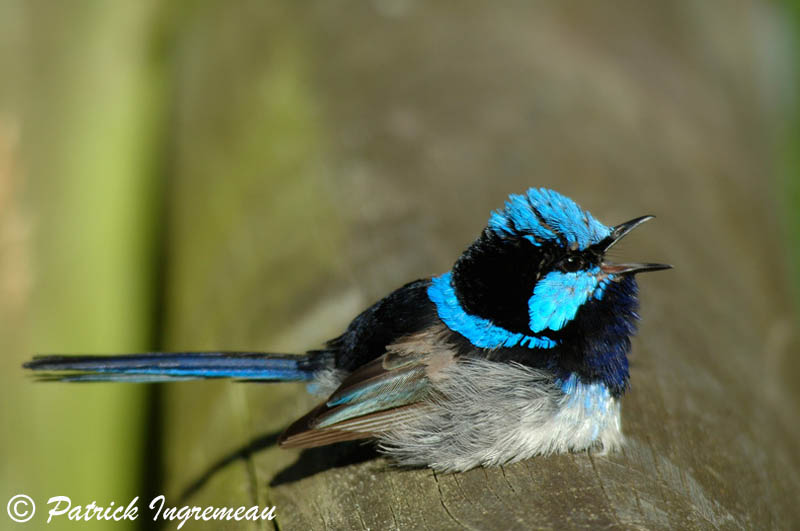
PROTECTION/ THREATS / STATUS:
Super Fairywren is common in its range, and populations are not threatened.
Nests may be parasitized by Cuckoos. Predators are snakes, corvids, red foxes, cats and rats.
Fr: Mérion superbe
Esp : Ratona Australiana Azul
Ital : Scricciolo azzurro superbo
Nd : Ornaatelfje
Russe : Прекрасный расписной малюр
Photographs by Patrick Ingremeau
TAMANDUA
Text by Nicole Bouglouan
Sources:
HANDBOOK OF THE BIRDS OF THE WORLD Vol 12 by Josep del Hoyo-Andrew Elliott-David Christie - Lynx Edicions - ISBN: 8496553423
Birds in backyards (Birds Australia and Australian Museum)
Wikipedia (Wikipedia, The Free Encyclopedia)
Arthur Grosset's Birds (Arthur Grosset)